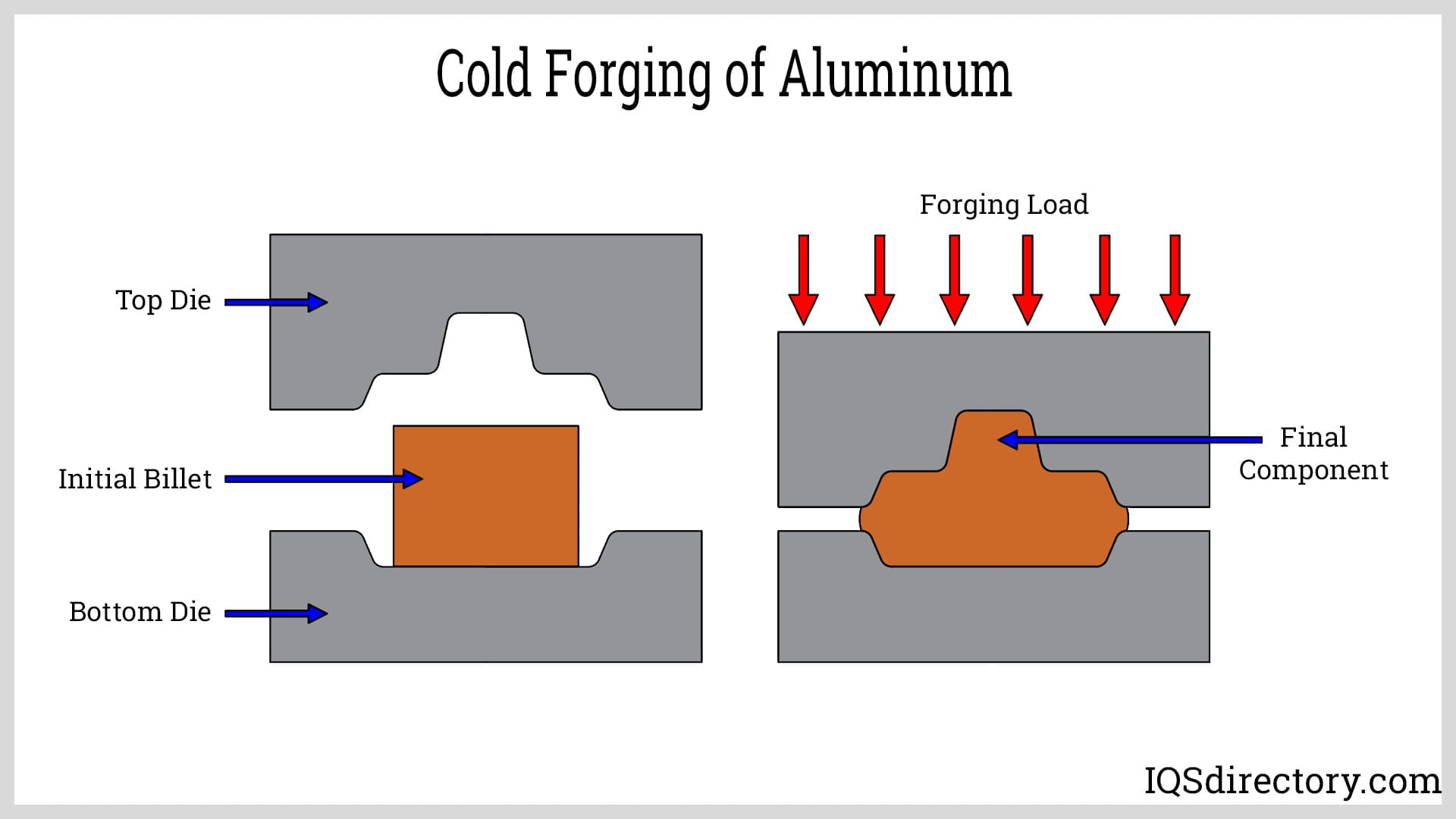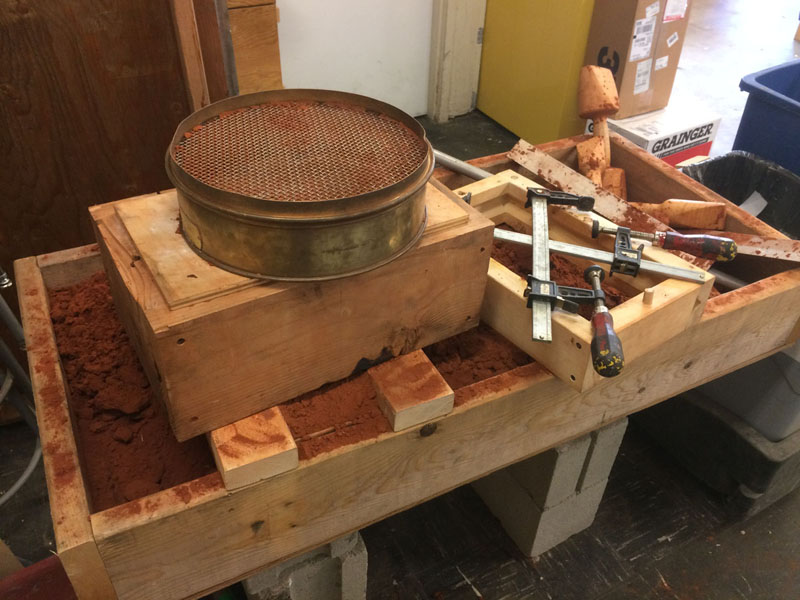Exploring Aluminum Foundry Wisconsin for manufacturing casting needs
Exactly How Aluminum Foundry Adds To Advancements in Aerospace Engineering
Aluminum shops are important to improvements in aerospace engineering. They produce lightweight, high-strength parts that are crucial for modern airplane. Through advanced spreading strategies, these factories develop intricate geometries that improve structural stability. Additionally, the advancement of premium Aluminum alloys sustains the industry's emphasis on gas effectiveness and sustainability. Obstacles remain in the production procedure. Understanding these aspects discloses the extensive effect of Aluminum on air travel's future.
The Significance of Lightweight Products in Aerospace Style
As the aerospace sector continues to develop, the significance of lightweight materials comes to be progressively noticeable. The demand for efficiency and sustainability drives engineers to prioritize making use of products that decrease overall weight without compromising architectural integrity. Light-weight products, specifically Aluminum, play a crucial role in improving gas effectiveness, improving payload capacity, and enhancing the total efficiency of aircraft.
In addition, the integration of these products enables cutting-edge styles, allowing makers to create more wind resistant forms that can withstand severe problems. The decrease in weight not just reduces operational costs yet additionally adds to a lowered ecological footprint, straightening with worldwide initiatives towards sustainability in aeronautics.
Advanced Spreading Techniques in Aluminum Foundries
Advanced spreading strategies in Aluminum shops play an essential duty in aerospace design by enabling the manufacturing of accurate and light-weight parts. Advancements in mold and mildew design and accuracy spreading procedures are crucial in achieving optimal performance and structural honesty. Furthermore, the development of light-weight alloys improves the overall efficiency and efficiency of aerospace applications.
Cutting-edge Mold And Mildew Design
Innovative mold style plays a crucial role in the effectiveness and effectiveness of Aluminum shops, specifically within the aerospace sector. By leveraging sophisticated materials and strategies, modern molds can be engineered to endure high temperature levels and stress, ensuring peak efficiency throughout the casting procedure. These layouts usually incorporate complicated geometries that enable the manufacturing of light-weight yet structurally sound components, essential for aerospace applications. Additionally, making use of computer-aided layout (CAD) software program facilitates accurate modeling, allowing factories to improve and replicate mold and mildew styles before physical manufacturing begins. This not only boosts the high quality of cast components but likewise lowers waste and preparation, leading to considerable cost savings. Overall, cutting-edge mold design is a cornerstone of progress in Aluminum Foundry technology for aerospace engineering.
Precision Casting Processes
The performance of innovative mold layouts perfectly incorporates with accuracy spreading processes, which are essential for producing top notch Aluminum elements in aerospace design. These procedures, consisting of sand casting, die spreading, and investment casting, ensure the development of complicated geometries with limited tolerances. Advanced strategies like vacuum cleaner spreading and pressure die casting boost the honesty and surface coating of the last items. Accuracy casting minimizes product waste while making the most of the mechanical homes of Aluminum, essential for aerospace applications. Additionally, utilizing real-time tracking and advanced simulation devices during the casting process enables prompt adjustments, causing improved quality assurance. Jointly, these accuracy spreading procedures setting Aluminum foundries at the leading edge of aerospace technology, supporting the market's demand for integrity and efficiency.
Lightweight Alloy Growth
As aerospace designers look for to enhance gas effectiveness and performance, lightweight alloy development ends up being an essential emphasis in Aluminum factories. These shops utilize innovative spreading techniques to create alloys that supply premium strength-to-weight proportions. Technologies in alloy composition, including the consolidation of elements like lithium and magnesium, make it possible for the manufacturing of products that stand up to extreme conditions while lowering overall airplane weight. Strategies such as die spreading and investment spreading promote the precision manufacturing of complicated forms, which are critical for aerospace applications. In addition, continuous study intends to maximize these alloys for boosted mechanical residential properties and enhanced longevity. By prioritizing light-weight alloy growth, Aluminum foundries significantly add to the evolution of aerospace design, leading the way for more sustainable and reliable airplane designs.

Enhancing Structural Integrity With Aluminum Components
Aluminum parts offer considerable advantages in improving structural honesty within aerospace engineering. Their light-weight nature adds to total effectiveness while maintaining stamina, which is crucial for aircraft performance. Furthermore, the tension resistance buildings of Aluminum aid guarantee the toughness and integrity of aerospace structures under different functional conditions.
Light-weight Product Advantages
While typical products frequently jeopardize weight for strength, using Aluminum parts in aerospace engineering uses substantial advantages in architectural integrity. Aluminum's light-weight nature adds to overall layout efficiency, enabling for more structured aircraft that eat much less gas, thereby enhancing sustainability. The material's exceptional strength-to-weight proportion assurances that components keep longevity without including unnecessary mass. This top quality promotes improved efficiency and agility in trip, in addition to maximized payload capacities. Additionally, Aluminum's resistance to corrosion lengthens the lifespan of aerospace frameworks, decreasing upkeep expenses and enhancing security. As manufacturers progressively adopt Aluminum alloys, the aerospace industry experiences a transformative shift in the direction of a lot more effective and reliable engineering remedies that prioritize both efficiency and ecological responsibility.
Stress And Anxiety Resistance Properties
Different products have one-of-a-kind residential or commercial properties, Aluminum's remarkable stress resistance stands out as an essential you could try here factor in enhancing the structural stability of aerospace components. This resistance plays a critical function in making sure that airplane can hold up against numerous functional anxieties, including exhaustion, impact, and environmental problems. Aluminum alloys, especially crafted for aerospace applications, exhibit high tensile stamina while preserving lightweight features, allowing designers to develop more reliable structures - Aluminum Foundry. In addition, the capacity of Aluminum to endure cyclic loading without significant contortion adds to the durability and integrity of aerospace parts. As advancements proceed in Aluminum Foundry techniques, the growth of stress-resistant Aluminum components guarantees more improvements in efficiency, safety and security, and performance across the aerospace industry, strengthening Aluminum's role as a favored material in contemporary engineering
Gas Efficiency Improvements Driven by Aluminum Innovations
As the aerospace industry seeks to boost fuel efficiency, cutting-edge uses of Aluminum have emerged as an essential option. Aluminum's light-weight nature significantly minimizes airplane weight, allowing for lower fuel consumption during trip. This decrease in weight is essential, as also tiny decreases can cause substantial renovations in overall fuel economy.
Advanced Aluminum alloys, designed for improved stamina and durability, enable suppliers to produce components that maintain structural stability while reducing mass - Aluminum Foundry. Additionally, the integration of Aluminum in airframes and engine components assists in enhanced aerodynamics, adding to minimized drag and raised efficiency
The fostering of Aluminum in aerospace not only fulfills the need for fuel-efficient style however also straightens with regulative stress check here for lower exhausts. As these innovations proceed to evolve, they play a significant duty in setting new standards for fuel performance, guaranteeing that the aerospace market can meet expanding financial and ecological challenges.

The Function of Aluminum in Sustainable Aeronautics Practices
The increasing emphasis on sustainable aeronautics techniques has actually placed Aluminum as an essential material in the quest for greener aircraft style. Understood for its lightweight residential properties, Aluminum substantially lowers aircraft weight, causing reduced fuel consumption and exhausts. Its recyclability further improves its sustainability profile, as Aluminum can be recycled indefinitely without loss of top quality. This particular sustains a round economic situation within the aeronautics field, minimizing waste and source deficiency.
Moreover, improvements in Aluminum alloys have enhanced their toughness and deterioration resistance, permitting for longer life span and reduced maintenance demands. These technologies promote the growth of a lot more efficient airplane structures, adding to general sustainability efforts. Additionally, Aluminum's thermal conductivity plays a crucial function in energy-efficient designs, enhancing systems such as warmth exchangers. Collectively, these features underscore Aluminum's crucial role in advancing lasting aeronautics, lining up with worldwide efforts focused on reducing the environmental impact of air traveling.
Difficulties Encountered by Aluminum Foundries in Aerospace Production
While Aluminum factories play a necessary role in aerospace manufacturing, they deal with substantial difficulties that can influence production performance and top quality. One major obstacle is the rigorous quality assurance criteria called for in the aerospace sector. Any kind of flaw can compromise safety and efficiency, demanding strenuous assessment procedures that extend manufacturing timelines. Furthermore, foundries typically emulate changing raw material costs, which can impact pricing and earnings. The complexity of Aluminum alloys made use of in aerospace applications additional makes complex the manufacturing procedure, as specific formulas are critical for attaining desired read the article mechanical properties. Furthermore, knowledgeable labor shortages hinder the capability to keep high-grade production levels. Finally, ecological regulations enforce restrictions on emissions and waste monitoring, calling for factories to spend in lasting practices, which can be cost-prohibitive. These elements jointly produce a landscape where Aluminum foundries need to constantly adapt to meet the evolving demands of aerospace production while guaranteeing safety and compliance.
Future Trends in Aluminum Applications for Aerospace Design
With innovations in innovation and increasing needs for effectiveness, the future of Aluminum applications in aerospace design is poised for substantial change. The combination of innovative Aluminum alloys and compounds is expected to enhance strength-to-weight ratios, bring about more fuel-efficient aircraft layouts. Additionally, innovations in additive production methods will certainly permit the production of intricate Aluminum frameworks that were formerly difficult, maximizing performance and decreasing waste.

Lasting practices will certainly play a crucial function, with an expanding focus on reusing Aluminum to decrease environmental impact. The aerospace sector is most likely to welcome smarter producing procedures, such as automation and man-made knowledge, making certain better and precision in Aluminum components. Collaborations in between Aluminum shops and aerospace firms will certainly promote research and growth, paving the means for brand-new applications that meet the rigid demands of modern aerospace design. In general, the future looks assuring for Aluminum's role in shaping the skies
Regularly Asked Concerns
What Are the Ecological Effects of Aluminum Production in Aerospace?
The environmental impacts of Aluminum production in aerospace include considerable energy consumption, greenhouse gas exhausts, and habitat interruption. Furthermore, mining processes can bring about dirt degradation and water contamination, raising problems concerning sustainability and environmental equilibrium.
Exactly How Does Aluminum Contrast to Other Products in Aerospace Applications?
Aluminum provides an one-of-a-kind combination of light-weight residential or commercial properties, rust resistance, and cost-effectiveness contrasted to various other products. Its high strength-to-weight proportion makes it specifically useful for aerospace applications, enhancing fuel effectiveness and general efficiency in aircraft style.
What Qualifications Do Aluminum Foundry Workers Demand for Aerospace Projects?
Aluminum Foundry employees call for specialized training in metallurgy and spreading strategies, together with expertise of aerospace market requirements. Qualifications in quality assurance and safety methods are also necessary to guarantee compliance with rigorous aerospace project needs.
Exist Any Type Of Safety Concerns With Using Aluminum in Aerospace Engineering?
Security issues pertaining to Aluminum in aerospace engineering consist of sensitivity to tension, corrosion, and fatigue cracks. Appropriate therapy and alloy option are important to mitigate these threats, making certain architectural integrity and general safety in aerospace applications.
Exactly How Does Aluminum Recycling Benefit the Aerospace Industry?
Aluminum reusing greatly benefits the aerospace market by lowering product prices, lessening ecological influence, and conserving power. This lasting method improves the sector's performance while promoting using light-weight, high-performance elements in airplane manufacturing.
Advanced spreading techniques in Aluminum shops play a critical duty in aerospace engineering by allowing the manufacturing of precise and light-weight elements. Cutting-edge mold and mildew design plays a crucial duty in the effectiveness and performance of Aluminum foundries, especially within the aerospace industry. As aerospace designers look for to boost fuel effectiveness and performance, light-weight alloy growth becomes a crucial emphasis in Aluminum factories. Aluminum alloys, specifically crafted for aerospace applications, show high tensile stamina while preserving light-weight features, making it possible for engineers to develop much more reliable structures. Partnerships between Aluminum shops and aerospace firms will certainly promote research and growth, paving the means for brand-new applications that meet the rigorous demands of modern aerospace design.